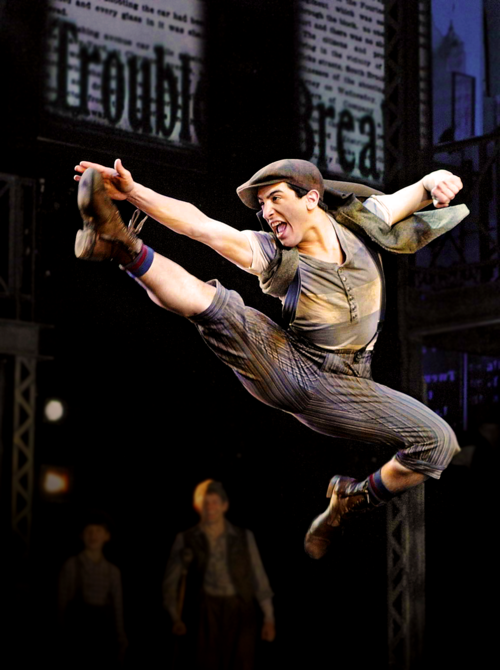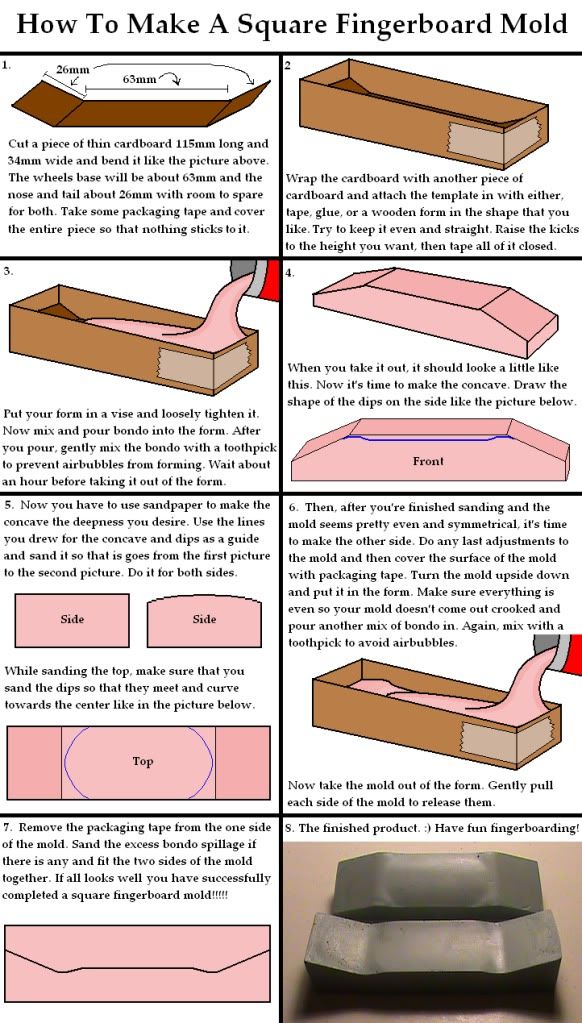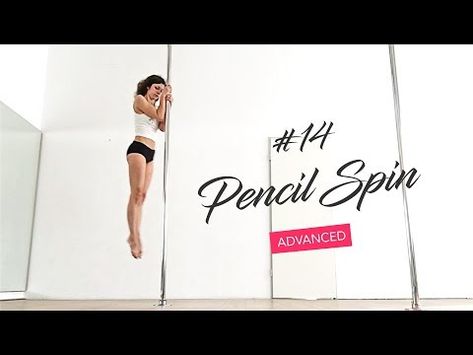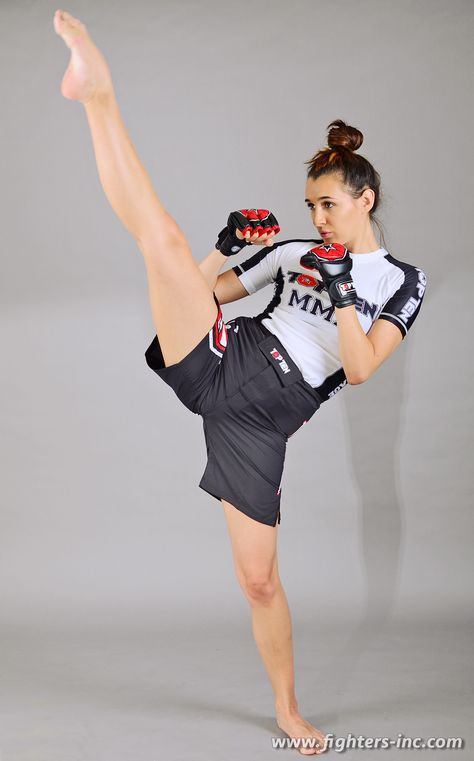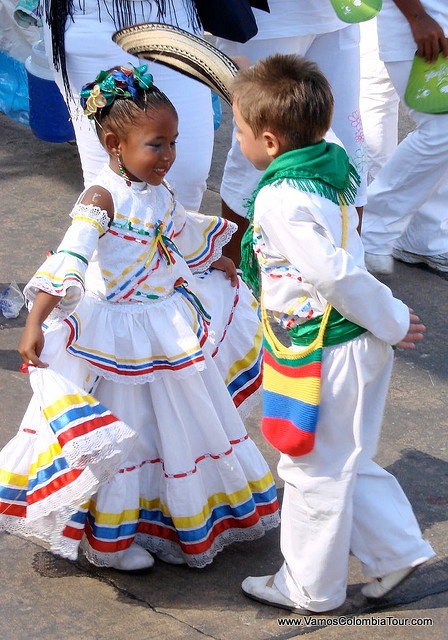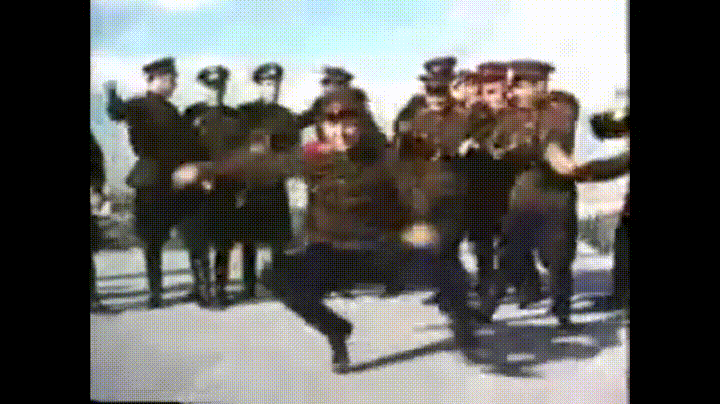How to dance kizomba for beginners
How to dance Kizomba | iASO Records
Kizomba is originally from Angola. As with other Latin social dances, Kizomba combines elements of European ballroom dance with African dance movement and timing.
Kizomba Timing:
Kizomba is in 4/4 time - which means that there are four beats to every measure. The larger cycle in the music revolves around 4 measure cycles - ie: each measure has four beats, so when 4 of these measures pass, 16 beats will have passed.
Basic Steps:
In Kizomba, there are several basic steps - each with its own timing. In addition, in Kizomba there are a variety of dance moves that bring the dancers temporarily away from the basic step patterns. Part of the challenge of dancing Kizomba is for leader and follower to remain synchronized in their steps.
Basic Step Variation A
The most basic step in Kizomba is a side to side two step. It starts for the leader on the left foot and for the follower on the right. The leader steps to the side with the left foot, then brings the right foot together with the left in a tap (do not leave your weight on the right foot). Then the leader steps to the right with the right foot and brings the left foot together with the right for a tap step. The pattern then repeats. Each pattern takes one measure to complete - with a step or tap on each beat. The follower mirrors the leader with the opposite foot.
Basic Step Variation B
Variation B illustrates just how complicated Kizomba's basic step patterns are in comparison to other social dances. On the surface, the step is fairly simple: The leader begins by stepping forward with the left foot, then steps with full weight on the right foot (either forward or in place), and finally taps with the left foot without leaving any weight on it. Now for the second half of the step, the leader steps again with the left foot, but this time backwards, steps back with the right foot, and taps back with the left - repeating the initial forward pattern but this time back in the opposite direction.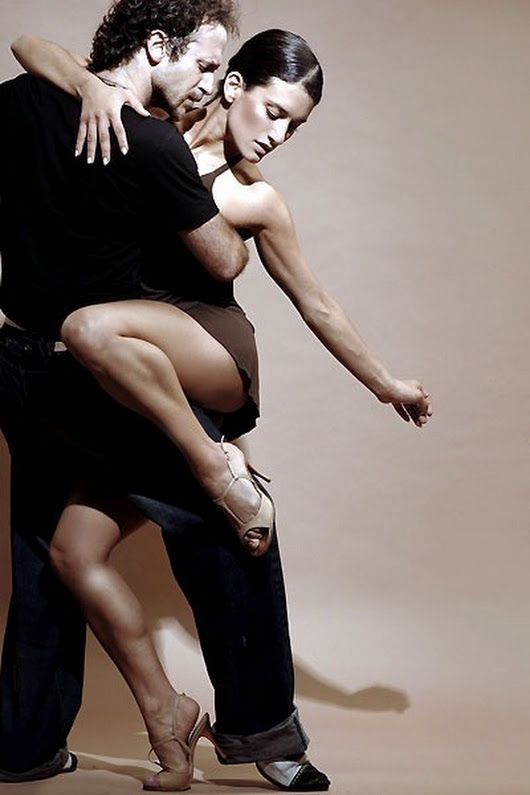 So the pattern consists of three steps in each direction. Each group of three steps begins with the same foot - for the leader the left foot. The follower mirrors with the opposite foot, and so always begins with the right foot. Each step and tap falls evenly on a beat, so the entire forward and back pattern (which consists of 6 steps) takes 6 beats. Here is where things get tricky. Kizomba has 4 beats to a measure, so the 6 beats do not complete 2 measures. If you begin this step pattern on beat 1, you will end it on beat 6 rather than beat 8. When you step again after completing a cycle of the pattern, you will be stepping on 7 rather than 1. The entire forward and back 6 step pattern must be repeated 4 times before it finally ends on 8. This complexity means that dancers must be particularly aware of their timing, or risk getting lost. When embarking on Basic Step Variation B, dancers must repeat the forward and back pattern 4 times before changing to a different step. Alternatively, dancers can use more complex footwork - cha cha steps etc - to transition to another pattern midway through a cycle.
So the pattern consists of three steps in each direction. Each group of three steps begins with the same foot - for the leader the left foot. The follower mirrors with the opposite foot, and so always begins with the right foot. Each step and tap falls evenly on a beat, so the entire forward and back pattern (which consists of 6 steps) takes 6 beats. Here is where things get tricky. Kizomba has 4 beats to a measure, so the 6 beats do not complete 2 measures. If you begin this step pattern on beat 1, you will end it on beat 6 rather than beat 8. When you step again after completing a cycle of the pattern, you will be stepping on 7 rather than 1. The entire forward and back 6 step pattern must be repeated 4 times before it finally ends on 8. This complexity means that dancers must be particularly aware of their timing, or risk getting lost. When embarking on Basic Step Variation B, dancers must repeat the forward and back pattern 4 times before changing to a different step. Alternatively, dancers can use more complex footwork - cha cha steps etc - to transition to another pattern midway through a cycle.
Basic Step Variation C
This pattern is similar to B, but adds a syncopated (cha-cha) step between the 3rd & 4th, and 6th & 1st steps of each pattern. So the leader steps forward with the left foot on 1, steps with the right foot on 2, steps with the left foot on 3 (this time with full weight), steps with the right foot quickly on 3-and (the beat midway between 3 and 4), and then steps back with the left foot on 4, steps with the right foot on 5, and then steps with the left foot (full weight) on 6, with the right on 6-and, finally with the left forward on 7 - which begins the next repetition of the pattern. The follower mirrors with the opposite footwork.
Basic Step Variation D
This step is the most simple of all, but is usually used within more complicated patterns rather than on its own. It's a simple left, right, left right - just as in merengue. So the leader steps with the left foot on 1, with the right foot on 2, with the left foot on 3, with the right foot on 4, etc.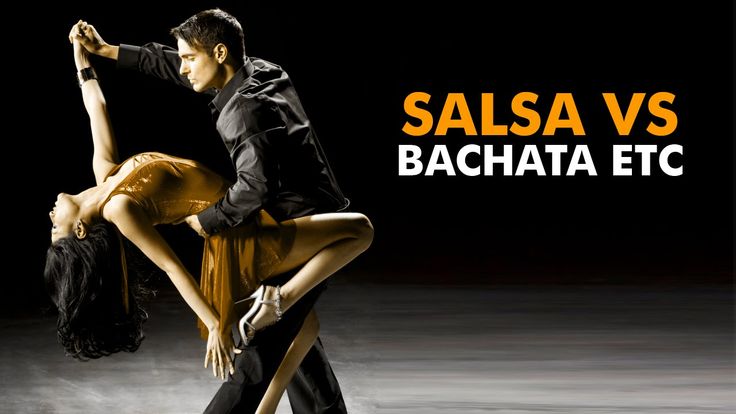 The follower mirrors. This step can be combined with variation B or C so that the dancers can exit from variation B or C without completing a full 4 cycles.
The follower mirrors. This step can be combined with variation B or C so that the dancers can exit from variation B or C without completing a full 4 cycles.
These basic steps of Kizomba and are used as building blocks to construct complex patterns. The variety of basic steps and free-style of the more complex patterns make Kizomba a difficult dance to understand and follow. The videos on this page give examples of authentic Kizomba dance. The first video gives instructions for how to dance Kizomba in Portuguese. The other videos are of breathtaking Cape Verdean and Angolan dancers.
Kizomba Dance Classes in Brooklyn NYC Brooklyn's Premier Latin and Afro Dance School NYC
Kizomba is a sensual dancing style that blends a romantic beat with the African rhythms of Angola. Its movements come from a combination of Semba and Zouk music styles from the French Caribbean Islands. Its sensual dance styles that evokes comparisons to many other dances such as Rumba and Tango. This is a great class for sharpening your partnering (lead/follow) skills. Please check our class schedule or schedule a private lesson.
This is a great class for sharpening your partnering (lead/follow) skills. Please check our class schedule or schedule a private lesson.
The Hustle originated in the dance clubs in the 1970's. As music changed from rock & roll to disco the dance began to develop and multiple variations of the hustle were born. Today the hustle is still enjoyed at many dance venues, and is danced to the music of the latest artists such as Usher and Beyonce. At Balmir Latin Dance Studio we specialize in the New York Style Hustle - a smooth, slotted dance characterized by fast-moving patterns with many turns. Come and get your groove back in this great class. Please check our workshop schedule for class availability.
The original Bachata dance style comes from the Dominican Republic where the music also was born. The early slow style in the fifties from where everything started was danced only closed, like the Bolero. The Bachata Basic Steps moving within a small square (side, side, forward and side, side, back) are also inspired from the Bolero but danced slightly different in Bachata and danced with syncopations (steps in between the beats) depending on the dancer's mood and the character of the music. The hand placement will vary with the dancers position which can be very close to semi-close to open.
The early slow style in the fifties from where everything started was danced only closed, like the Bolero. The Bachata Basic Steps moving within a small square (side, side, forward and side, side, back) are also inspired from the Bolero but danced slightly different in Bachata and danced with syncopations (steps in between the beats) depending on the dancer's mood and the character of the music. The hand placement will vary with the dancers position which can be very close to semi-close to open.
The cha-cha-cha, or simply cha-cha, is a dance of Cuban origin. It is danced to the music of the same name introduced by Cuban composer and violinist Enrique Jorrín in the early 1950s. This rhythm was developed from the danzón-mambo- Derived from the shuffling sound of the dancers' feet.The original Cuban and the ballroom cha-cha count is "two, three, chachacha", "four-and-one, two, three" or "one, two, three, cha cha".
"One who would study karate-do, must purge himself of selfish and evil thoughts, for only with a clear mind and conscience can he understand that which he receive.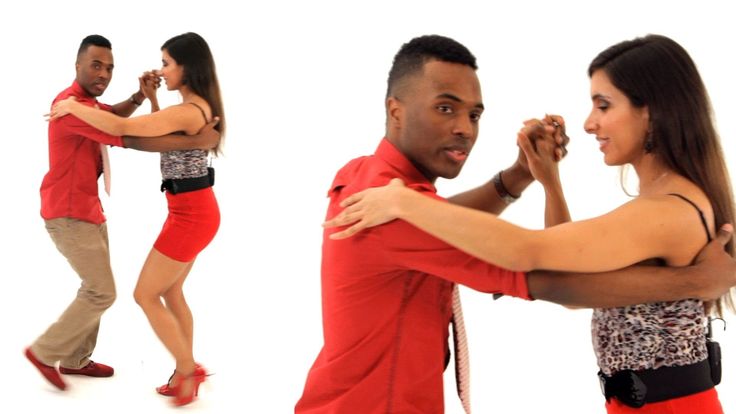 "
"
-Gichin Funakoshi
Shihan Lowe with over 35 years of martial art experince is certified in Dai-Lchi Karate-Do Int. He is licensed by the national Karate Federation, and with over 30 years of teaching experience he has had the pleasure of training national and international champions.
His self defense based classes , aid in weight reduction, offer cardio training , and improve daily energy levels.
PURCHASE CLASS(ES)
basic moves for beginners with video
Contents
This is not just a dance direction, it is a whole subculture: stormy, but at the same time very romantic. A gentle African dance is performed exclusively in pairs. Looking at people dancing kizomba, one might get the impression that they are in love - it looks so soft and sincere. Want to move like the couples in the video tutorials? The team of the Laboca dance club will be happy to teach you!
Kizomba rules
The accompaniment of kizomba gained modern sounding due to electronic instruments.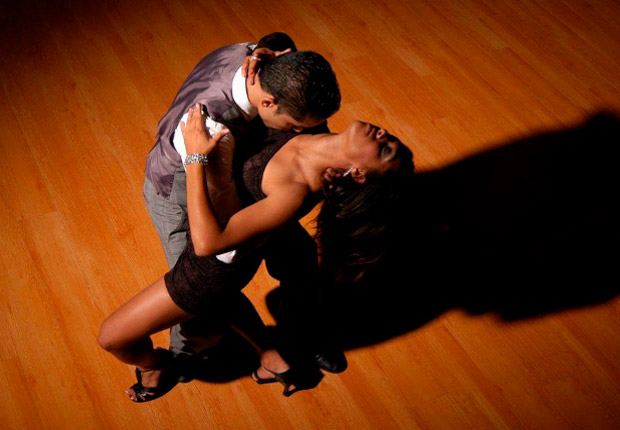 They also allow you to create the desired rhythm with a size of four by four measures. This style starts a new theme song every sixteen beats.
They also allow you to create the desired rhythm with a size of four by four measures. This style starts a new theme song every sixteen beats.
The movements of kizomba are very similar to bachata: they are also simple and uncomplicated. You can recognize kizomba by its smoother elements, the placement of accents with the hips, the very strong hugs of partners, the sedentary body and the synchronism of the performers in a pair. Leading, unlike Latin American dances, is carried out from the chest. Kizomba steps are done on soft, slightly bent knees. The head is kept straight all the time and does not "jump".
In couples, as in bachata, the man leads, the woman simply follows the direction given by him and decorates the dance with elements of improvisation. The partners are as close as possible to each other, the man gently grabs the woman's back, and her left hand lies on his neck.
A distinctive feature of kizomba is the so-called Tarraschinha - the ability to dance with almost no noticeable movements. These are the waves, the swaying of the pelvis, the barely noticeable curves of the body, which make kizomba so seductive.
These are the waves, the swaying of the pelvis, the barely noticeable curves of the body, which make kizomba so seductive.
Sign up for a trial lesson
Kizomba basic movements
It is important to realize that kizomba is an African dance that came to us from the rituals of wild tribes. It is believed that it began to spread across European dance floors quite by accident. And even though the direction has already acquired modern features, the main movements in kizomba have not changed: the performers must catch the rhythm of the music with their bodies and embody it in their movements and vibrations.
At the kizomba class you will not learn complex elements and intricate figures, but master the basic steps, get acquainted with tarraschinya and begin to dance calmly and smoothly.
It is important to improve the plasticity of the body, learn how to effectively rotate the hips and move gently, but rhythmically.
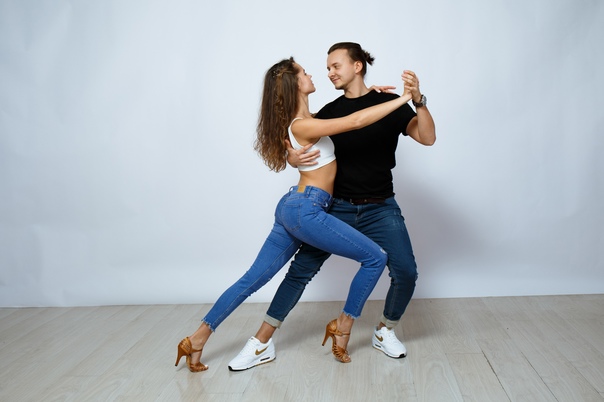
The basic steps of kizomba look like stepping over with the transfer of body weight from one side to the other. The man starts on the left foot, the woman on the right. Try to cross in one place first.
The next movement is in a circle. The man takes a side step to the left side, leaving the weight on the left leg. The partner puts his right leg aside and then takes a side step, again without transferring body weight. The woman mirrors his exercises. Try practicing this movement as you move around the room.
Another basic movement: the partner takes a step forward with the left foot, then with the right foot and puts the left foot forward without transferring body weight to it. Then - again a step with the left, but already back. The woman duplicates the man's movement using opposite legs.
Having mastered the three basic movements, you are already dancing kizomba! And for spectacular tarraschinya and the ability to freely improvise, come to the Laboca dance club!
Kizomba dance videos
The best dance videos - kizomba, video lessons for beginners.
- home
- Kizomba
- Video
Kizomba is a new direction of modern dance culture, a new direction for Russia since the dance itself originated in Angola in the 80s of the twentieth century under the influence of French Creole music and African folk rhythms. And in Europe, it has spread widely in the twenty-first century. And now it is winning the hearts and minds of today's youth. Everyone wants to learn how to dance kizomba, everyone wants to shine at parties, to be fashionable, modern, to be “in the stream”.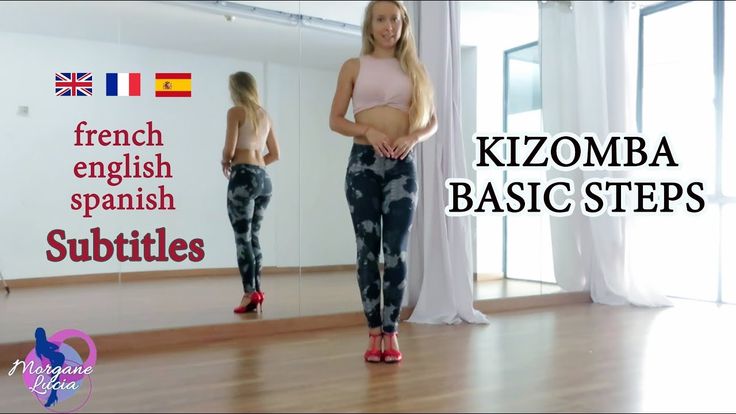 But not everyone has the opportunity to go to a dance school or hire a teacher for private lessons. And you really want to impress your partner and friends! That's when 9 comes to the rescue0054 kizomba video . You can study online or download the video from the Internet. The main thing you need to know is that kizomba is a pair dance in all respects, and without the desire of a partner to engage with you, nothing will work. But when consent is received, it will not be difficult to learn the first steps and movements of kizomba, and very soon the two of you will begin to enjoy the dance. And there is not far from success in the club! Dare! You will succeed!
But not everyone has the opportunity to go to a dance school or hire a teacher for private lessons. And you really want to impress your partner and friends! That's when 9 comes to the rescue0054 kizomba video . You can study online or download the video from the Internet. The main thing you need to know is that kizomba is a pair dance in all respects, and without the desire of a partner to engage with you, nothing will work. But when consent is received, it will not be difficult to learn the first steps and movements of kizomba, and very soon the two of you will begin to enjoy the dance. And there is not far from success in the club! Dare! You will succeed!
KIZOMBA - SIGN UP FOR A FREE LESSON
Kizomba video - beautiful dance
Kizomba video: dance in Paris
Kizomba video: Kizomba technique
You always wanted to learn how to dance tango or merengue, but you understood that you need to spend money to enroll in a dance school a lot of money, time and effort, and all this is just a lot and does not happen.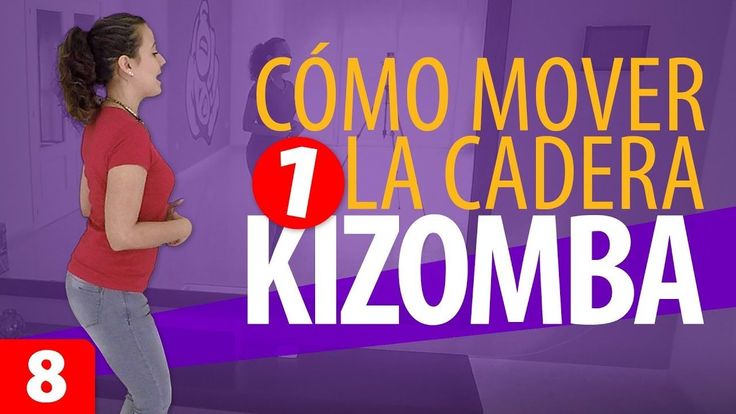 We have a solution to this problem and it's called kizomba video. Kizomba is a club light version of Argentine tango, semba, but flavored with Creole romance and African sensibility. And this dance is now at the peak of popularity. Born in Angola thirty years ago, he has already conquered the continents, became widely known in Europe, gained numerous admirers there and reached our country. Kizomba schools open, themed parties are held, and when learning kizomba, you and your partner will be in the center of attention. You just need to find it on the Internet kizomba dance video , move the table and chair, turn on the video, and you will not notice how this dance will captivate and lead you, telling a wonderful story of love and life, youth and beauty. This is a real social dance, it is a pair dance, based on absolute trust in each other. This dance will teach you to love even deeper and brighter.
We have a solution to this problem and it's called kizomba video. Kizomba is a club light version of Argentine tango, semba, but flavored with Creole romance and African sensibility. And this dance is now at the peak of popularity. Born in Angola thirty years ago, he has already conquered the continents, became widely known in Europe, gained numerous admirers there and reached our country. Kizomba schools open, themed parties are held, and when learning kizomba, you and your partner will be in the center of attention. You just need to find it on the Internet kizomba dance video , move the table and chair, turn on the video, and you will not notice how this dance will captivate and lead you, telling a wonderful story of love and life, youth and beauty. This is a real social dance, it is a pair dance, based on absolute trust in each other. This dance will teach you to love even deeper and brighter.
Video lessons of kizomba
If you don't get everything right at the kizomba lessons at the dance school, don't despair and don't quit. Maybe not you, but your partner is confused about steps and rhythm and wants to quit this difficult, as it seems to him, training.
For these cases, the experienced trainers of our dance school have developed special lessons. There you will be taught to listen to music and pay attention to the rhythm. The partner will be taught to lead the partner, and she will be taught to trust the partner and follow him in the dance. If you can understand how to do this, then, for sure, your personal life will also become much more harmonious, because mutual trust is the basis of love. In fact, kizomba is a fairly simple dance and you will quickly catch up. Kizomba video lessons will help you even if you are busy and missed a few classes at school.
